6 foods to eat to stay healthy this winter
Put down the orange juice—here’s what really works to keep you well.

Despite what you’ve heard, chicken soup won’t cure the common cold and a plate of oranges won't prevent you from getting sick. But an overall healthy diet, along with other good-for-you habits, can help your whole body run the way it should.
"There are no studies that show foods with vitamin C will prevent a cold," says Melanie Steere, a registered dietitian and diabetes educator with St. Marks Hospital in Salt Lake City, Utah. In fact, no single vitamin or mineral, even in abundance, can help stave off a virus.
The immune system, the body's defense against viruses and bacteria, is complex and strengthening it can be tough. Your best bet is to maintain a healthy lifestyle with regular exercise, adequate sleep, stress reduction, weight management and a healthy diet. Let's not forget: Even people with the "strongest" immune systems are still susceptible to cold and flu viruses. You can further prevent a winter cold or flu by washing your hands often and properly, as well as getting a yearly flu shot.
A diet rich in fruits and vegetables can help you maintain a healthy weight, which can reduce your risk of chronic conditions, like heart disease, stroke, obesity and diabetes. According to a 2018 Internal Journal of Cancer study, regular fruit and vegetable consumption is linked to a lower risk of breast cancer among women.
Men and women should eat 2 to 3 cups of vegetables and 1.5 to 2 cups of fruit a day, according to US dietary guidelines. Shop the produce department or your local farmer's market for the season's freshest eats, like sweet potatoes, avocados and oranges, which can easily be added to your weekly recipes.

Start with a healthy lifestyle
Adequate exercise, proper sleep and stress management can help protect your body and naturally bolster your immune system.
Everyone's sleep needs vary, but the recommended range is seven to nine hours of nightly shuteye. "It helps keep the immune system strong and fight off infection," Steere says.
In addition to keeping your immune defenses in working order, regular physical activity can also help you maintain a healthy weight, prevent diabetes, lower blood pressure and cholesterol and improve overall health. If you can't meet the weekly recommendation of at least 150 minutes of moderate-intensity aerobic activity, start with a few minutes of walking per day, gradually going further.
Exercise can help relieve day-to-day stress too. If you're feeling bogged down with tension, meditating, getting adequate sleep and talking to a family member or friend can also help.
You can, and should, combine all of these activities with a healthy diet to keep your immune system functioning well all fall and winter long. Ready to get munching? Here's how.
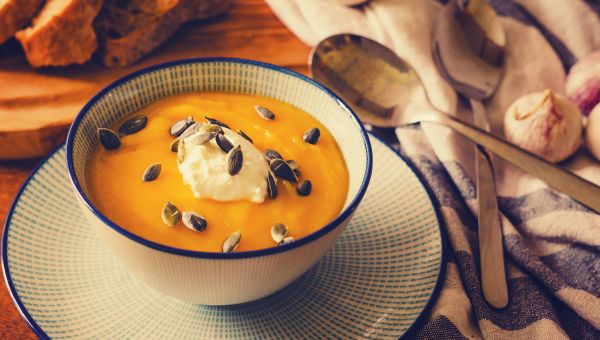
Pick up pumpkin
Common colds typically strike when the weather is chilly, which is also the time of year this squash is at its peak. Pumpkin, perhaps the most well-known variety of squash, is versatile; puree can be folded into oatmeal, nonfat Greek yogurt or lightened-up baked goods. The fresh stuff can be cubed, roasted and tossed into a seasonal salad.
Any way you eat it, the benefits are top notch. A half-cup serving of unsweetened pumpkin puree contains about 40 calories, but delivers more than 19,000 international units (IU) of vitamin A. This important vitamin is essential for vision and heart, lung and kidney function.
A note of caution: Too much of a good thing isn't always a good thing, and this is especially true regarding Vitamin A. It's possible to consume toxic amounts of it, which can cause headaches, dizziness and blurred vision. It's rare to get sick from eating foods rich in vitamin A, but always speak with your doctor before taking vitamin supplements.
Roast a batch of cubed pumpkin—about 4 cups—with a tablespoon of olive oil and a sprinkle of salt and pepper at the beginning of the week. One-fourth of the batch, with about 60 calories, can be whipped into a meal any time hunger strikes. Add your squash to a bed of spinach with crumbled feta cheese and a drizzle of balsamic vinaigrette. You can also make a quick soup by sauteing with diced onion and tossing everything into a blender with a splash of low-sodium vegetable broth and coconut milk.
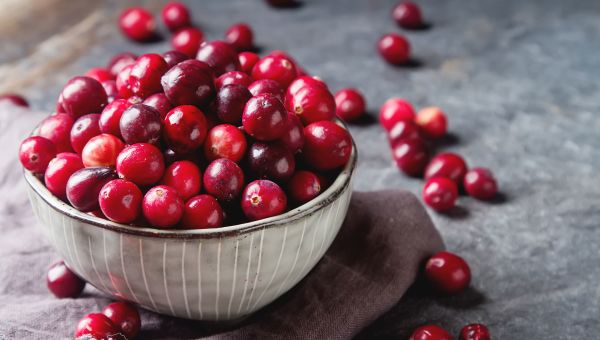
Give cranberries a try
Cranberries are so much more than the gelatinous sauce served on Thanksgiving. These plump berries are an all-purpose fruit; they add sweetness to a savory dish or a bitter bite to sweet treats.
Cranberries have 4.6 grams of fiber per raw cup, which can help keep your digestive system running smoothly. Daily fiber intake should reach between 21 and 25 grams for women and 30 to 38 for men.
Dried cranberries are a good option, too. Shop around for an unsweetened variety and mind your portion size, since they can be easy to overeat. "I recommend putting fresh, whole cranberries into recipes as much as possible," Steere says. Some of her favorites: muffins, oatmeal and breads. Whole berries can also be roasted alongside other seasonal veggies, like sweet potatoes and Brussels sprouts, and paired with poached chicken breast or a lean cut of pork.
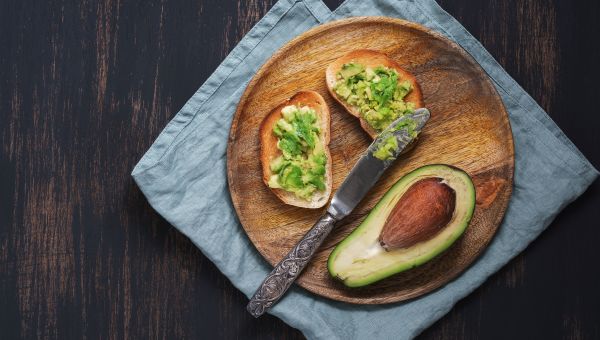
Add avocado
Don’t let this fruit's tough, green skin scare you away; the tender flesh is packed with nutrients, not to mention it’s so tasty.
Avocadoes are loaded with good-for-you fat and fiber that help the body absorb vitamins A, D, E and K, according to Steere. "Including some healthy fats in our diet can help us maintain good health," Steere adds. Effortlessly toss chunked avocado into your salad or add to the top of a veggie omelet. Avocado makes a sweet mousse when blended with dark chocolate, Greek yogurt and honey.
Sure, fruits and veggies are an essential part of a healthy diet, but so are whole grains, lean proteins and healthy fats. Looking for a quick and delicious way to combine these nutrients? Top two slices of whole grain toast with a smear of smashed avocado, spinach, tomato and an egg cooked to your liking.
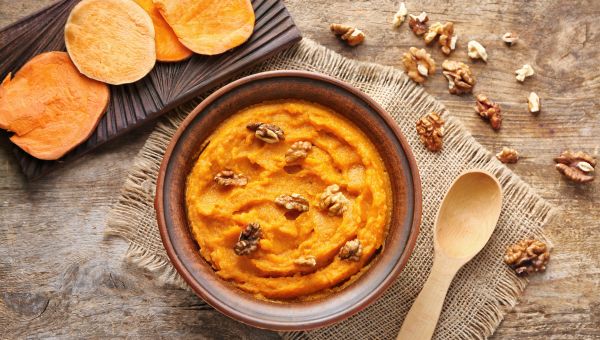
Say "yes" to sweet potatoes
Fun fact: Spuds marketed as yams at many traditional grocery stores are actually sweet potatoes, according to Steere, and they're great for you.
One medium sweet potato contains almost 4 grams of fiber, which your digestion will thank you for, with no saturated fat or cholesterol. Ready to eat? Chop and roast one sweet potato with a cup of cauliflower florets—also abundant in the fall—with a drizzle of olive oil and your favorite herbs and spices, like salt, pepper, paprika and oregano. Blend your warm ingredients with a touch of low-sodium veggie broth, and stick a spoon in it.
Steere also recommends baking sweet potato fries or mixing mashed sweet potato into whole grain pancakes, pies and muffins.
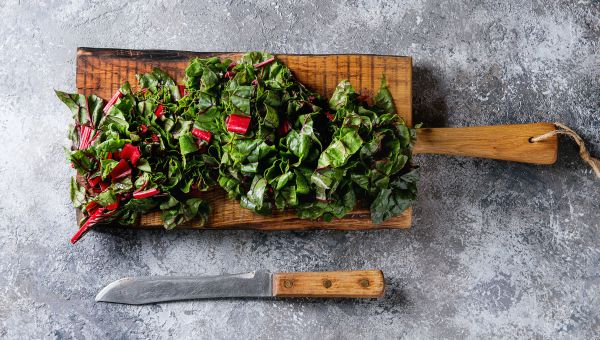
Try Swiss chard
These long-stalked leafy greens don’t always make it onto your weekly shopping list, and we get it—they can be intimidating. But they're worth a shot, Steere believes. "Add some salt to the leaves and massage the Swiss chard gently," she says. "It softens the leaves and makes them more palatable."
Chopped and massaged chard can be added to salads and premade soups (pick a low-sodium variety). They can also be sauteed and mixed with cooked quinoa, bell peppers and topped with a dressing of honey, olive oil and lemon juice.
Per chopped cup, chard contains just 7 calories, so it's perfect for adding bulk to meals without tipping the scale. Research has shown that excess weight can diminish the body's immune system. Eating low-calorie and nutrient-dense foods is typically a good place to start.
Tracking your meals with an old fashioned food journal or smartphone app, like Sharecare, can also help you stay on target to reach your health and weight goals. Simple download the application on your iOS and Android device and log the size and quality of your daily meals.
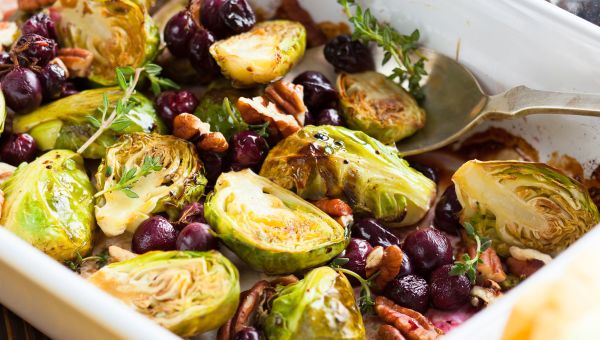
Incorporate Brussels sprouts
Brussels sprouts have a bad reputation, but when prepared right, are delicious! They may not be a family favorite, but they're worth a try. "They're great roasted or sauteed, and can be topped with a sprinkle of Parmesan cheese and salt," Steere says. You can also add a drizzle of olive oil and lemon juice or balsamic vinegar, she recommends. Half a cup of these small, green cabbages add color, flavor and just 28 calories to your plate.
A word of caution: Brussels sprouts are rich in vitamin K, which can interfere with blood thinners taken to prevent clots. Speak with your doctor before munching green veggies like kale, spinach and asparagus and find out which seasonal fruits and veggies are best for you.
This content originally appeared on Sharecare.com.
More On


video
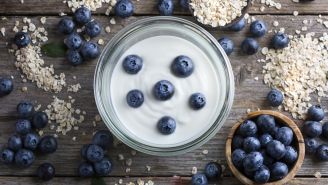
article
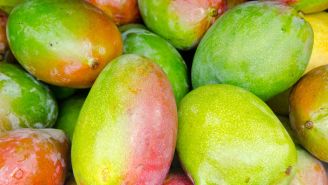
slideshow


video


video
